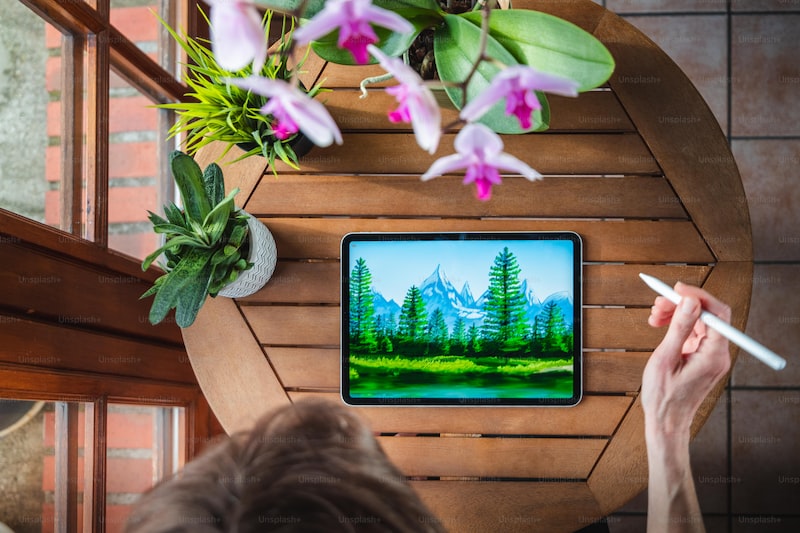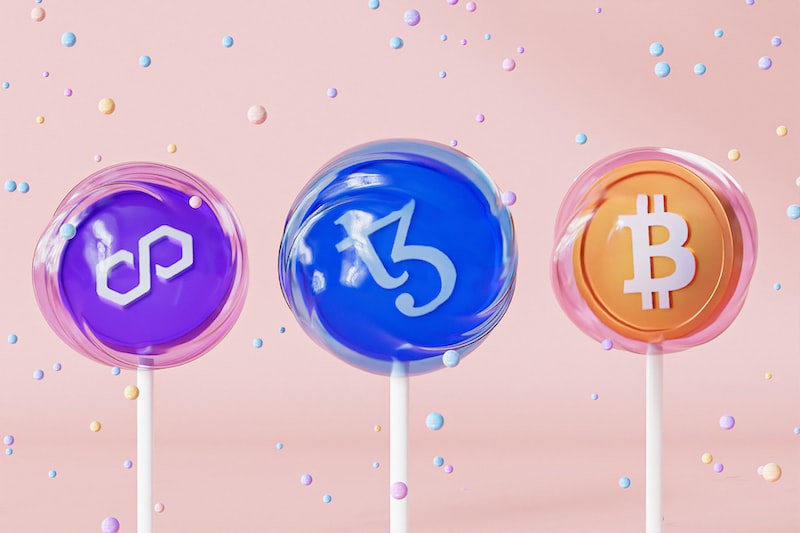Table of Contents
So, you’re an artist and you’ve heard about this new trend called NFTs. But what exactly are they, and how can you get started creating and selling your own? In this article, we’ll explore the world of art in the digital era and guide you through the process of creating and selling your first NFT.
First things first, let’s break down what an NFT is. NFT stands for Non-Fungible Token, and it’s a type of digital asset that represents ownership or proof of authenticity of a unique item, such as artwork, music, videos, or even virtual real estate. Unlike cryptocurrencies like Bitcoin or Ethereum, which are fungible and can be exchanged on a one-to-one basis, NFTs are one-of-a-kind and cannot be replicated.
Creating your first NFT is an exciting journey that begins with choosing the right platform. There are several popular NFT marketplaces, such as OpenSea, Rarible, and SuperRare, where you can mint and sell your digital creations. Each platform has its own requirements and fees, so it’s important to do your research and select the one that aligns best with your goals.
Once you’ve chosen a platform, you’ll need to prepare your artwork for the digital realm. This involves converting your creation into a digital format, such as a high-resolution image or a video file. Make sure to showcase your work in the best possible light, capturing all the intricate details and nuances that make it unique.
Now comes the exciting part – minting your NFT. Minting refers to the process of turning your digital artwork into a unique token on the blockchain. This process typically involves connecting your wallet to the chosen marketplace, uploading your digital file, setting a price, and adding any additional information or metadata that enhances the value of your NFT. Once minted, your artwork will be assigned a unique token ID, which serves as the proof of ownership.
Selling your NFT is all about marketing and promotion. Treat your NFT like a gallery-worthy masterpiece and make sure to leverage social media platforms, online communities, and influencers to spread the word. Engage with potential buyers, tell the story behind your creation, and highlight its unique features. Remember, the more exposure your NFT gets, the higher the chances of finding the right buyer.
the digital era has revolutionized the way artists create and sell their work, and NFTs
have opened up new avenues for monetization. By understanding the basics of NFTs, choosing the right platform, preparing and minting your artwork, and effectively marketing your creations, you’ll be well on your way to success in the exciting world of digital art. So, what are you waiting for? Start creating and selling your first NFT today and embark on an extraordinary artistic journey like never before!Revolutionizing the Art World: How Digital Era Ushers in a New Wave of NFT Creators
The art world is undergoing a monumental transformation with the advent of the digital era. The rise of Non-Fungible Tokens (NFTs) has revolutionized the way artists create and distribute their work, ushering in a new wave of NFT creators that are changing the landscape of the art market.
So, what exactly are NFTs? In simple terms, an NFT is a unique digital asset that represents ownership or proof of authenticity of a specific piece of artwork or collectible. Unlike traditional art, which can be replicated or reproduced, NFTs provide a way to prove ownership and establish scarcity in the digital realm. This uniqueness and scarcity have captivated both artists and collectors alike, as it opens up new opportunities for monetization and creativity.
With the rise of NFTs, artists are no longer limited to traditional mediums such as canvas or sculpture. Digital artists, in particular, are embracing this new technology to explore endless possibilities and push the boundaries of their creativity. They can now create immersive experiences, interactive installations, and even virtual worlds, all of which can be tokenized and sold as NFTs.
One of the most significant advantages of NFTs is the ability for artists to retain control over their work and receive royalties every time their NFT is resold. This is made possible through smart contracts, which automatically enforce these royalty payments. For artists who have historically struggled with receiving fair compensation for their work, this is a game-changer that empowers them to monetize their creations more effectively.
Furthermore, NFTs have democratized access to the art market. Artists can reach a global audience without the need for intermediaries like galleries or agents. This direct connection between artists and collectors fosters a more inclusive and diverse art community. Emerging artists now have an equal opportunity to showcase their talent and gain recognition, irrespective of their geographical location or social background.

the digital era has brought forth a new wave of NFT creators, revolutionizing the art world. With NFTs, artists can explore unconventional mediums, retain control over their work, and reach a global audience. This technology has opened up exciting possibilities for artists and collectors alike, shaping the future of the art market in unprecedented ways.
From Canvas to Code: Unveiling the Secrets Behind Creating Your First NFT Masterpiece
Are you ready to embark on an artistic adventure that blends creativity with cutting-edge technology? In this article, we’ll dive into the captivating world of NFTs and explore how you can transform your canvas creations into digital masterpieces. Let’s unveil the secrets behind creating your first NFT masterpiece!
Traditional art has always been confined to physical mediums like canvas and paper. However, with the rise of Non-Fungible Tokens (NFTs), artists now have the opportunity to showcase their work in the digital realm. NFTs are unique digital assets that can represent various forms of art, including illustrations, paintings, photographs, and even music.

To begin your journey into the NFT space, you’ll need to digitalize your artwork. Start by capturing a high-resolution image of your masterpiece using a quality camera or scanner. Ensure that the lighting is optimal to capture every detail and color accurately. Once you have a digital copy, it’s time to choose the platform where you’ll mint your NFT.
Numerous platforms facilitate the creation and sale of NFTs, such as OpenSea, Rarible, and SuperRare. Each platform has its own set of requirements and fees, so take the time to research and find one that aligns with your needs. Create an account, upload your digital artwork, and provide relevant details like title, description, and edition size.
One aspect that sets NFTs apart from traditional art is the concept of blockchain technology. The blockchain acts as a decentralized ledger that verifies the ownership and authenticity of each NFT. It ensures that your digital masterpiece remains unique and cannot be replicated or tampered with.
Once your NFT is minted, it’s time to unveil it to the world. Promote your artwork through social media channels, art communities, and online galleries. Engage with your audience, share the story behind your creation, and let them experience the beauty of your NFT masterpiece.
the world of NFTs offers artists an incredible opportunity to transcend physical boundaries and reach a global audience. By digitizing your artwork and minting it as an NFT, you can unleash your creativity in ways never imagined before. So, grab your digital brush and start creating your first NFT masterpiece today!
Decoding the Digital Canvas: Artists Embrace NFTs as a Game-Changer for Self-Expression
When it comes to self-expression, artists have always sought innovative ways to showcase their creativity. In today’s digital age, a new phenomenon has captured their attention: Non-Fungible Tokens (NFTs). These unique digital assets have emerged as a game-changer for artists, revolutionizing the art world and providing a fresh canvas for creative exploration.
But what exactly are NFTs? Think of them as digital certificates of authenticity. Unlike cryptocurrencies such as Bitcoin, which are interchangeable, NFTs represent one-of-a-kind items. They leverage blockchain technology to establish ownership and provenance, creating scarcity and value in the digital realm.
For artists, NFTs offer unparalleled opportunities for exposure and monetization. By minting their artwork as NFTs, artists can reach a global audience without the limitations of a physical gallery. This opens doors for emerging talents who may have struggled to break into the traditional art market. Moreover, artists can receive royalties every time their NFT is resold, ensuring ongoing revenue streams that were previously unimaginable.
The allure of NFTs lies in their ability to provide authenticity and uniqueness in the digital landscape. Artists can experiment with various mediums, including digital paintings, animations, music, and even virtual reality experiences. These digital creations can be tokenized and traded on specialized platforms, giving artists direct access to a passionate community of collectors and enthusiasts.
Embracing NFTs also means breaking free from the constraints of traditional artistic mediums. With the digital canvas, artists can explore limitless possibilities. They can seamlessly integrate interactive elements, dynamic visuals, and even incorporate smart contracts that enable programmable artworks. This fusion of art and technology enables artists to elevate their self-expression to new heights, captivating audiences in unprecedented ways.
NFTs have become a transformative force in the art world, empowering artists to redefine self-expression. By embracing the digital canvas, artists can transcend geographical boundaries and connect with a global audience. The unique nature of NFTs unleashes immense potential for artists, enabling them to monetize their creations and establish a lasting legacy. As this revolution unfolds, one thing is certain: NFTs have opened a new chapter in the history of art, where the possibilities are limited only by the artist’s imagination.
Unlocking the Digital Vault: Discover How Artists Are Profiting from Selling NFTs

Have you ever wondered how artists are embracing the digital realm to boost their earnings and gain recognition? Enter NFTs, the latest phenomenon in the art world. Non-fungible tokens (NFTs) have revolutionized the way artists create, sell, and monetize their work. In this article, we will delve into the details of how artists are profiting from selling NFTs, unlocking a whole new world of possibilities.
First things first, what exactly are NFTs? Think of them as unique digital assets that can represent ownership or authenticity of a piece of art, music, video, or any other form of creative content. Unlike cryptocurrencies such as Bitcoin or Ethereum, which are interchangeable, NFTs are one-of-a-kind, indivisible tokens stored on a blockchain. This technology allows artists to establish provenance, create scarcity, and ensure the uniqueness of their creations.

One of the primary ways artists profit from NFT sales is through auctions. They can auction their digital artwork directly on NFT marketplaces like OpenSea, Rarible, or SuperRare, where collectors bid on the pieces. The beauty of this method is that artists can receive a percentage every time their artwork gets resold in the future too, thanks to smart contracts. This provides ongoing passive income for artists, even after the initial sale.
Additionally, artists can leverage NFTs to offer exclusive perks and experiences to their fans. By creating limited edition NFTs, artists can grant owners access to VIP events, backstage passes, or private meet-and-greets. These unique opportunities add value to the NFTs, making them highly sought after by collectors and fans alike.
Moreover, NFTs enable artists to establish direct relationships with their audience. Traditionally, artists relied on galleries or agents to sell their work, which often resulted in limited exposure and lower profits. With NFTs, artists can bypass intermediaries, reach a global audience, and interact directly with their fans, building a loyal community around their art.
NFTs have opened the doors to a new era of digital art where artists can unlock the full potential of their creativity and profit from their work like never before. Through auctions, exclusive perks, and direct engagement with fans, artists are no longer confined by traditional limitations. The digital vault has been unlocked, and artists are embracing this revolutionary opportunity with open arms. So next time you stumble upon an NFT, remember that behind it lies an artist who has harnessed this exciting technology to thrive in the digital age.





